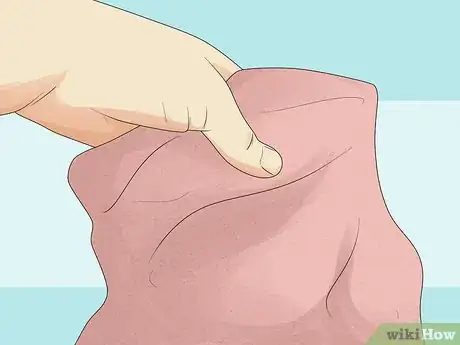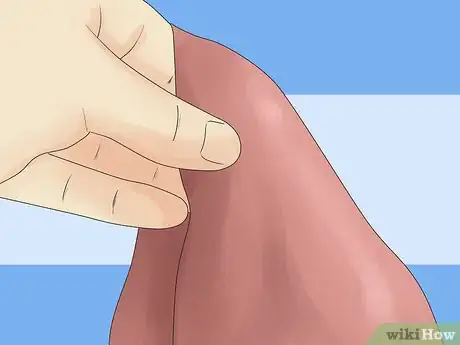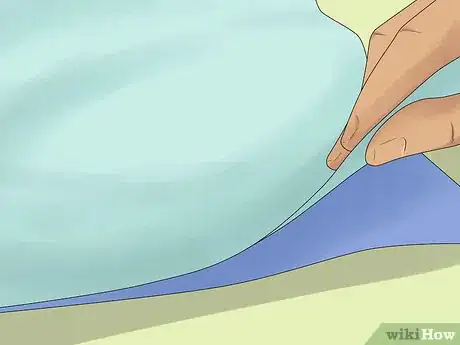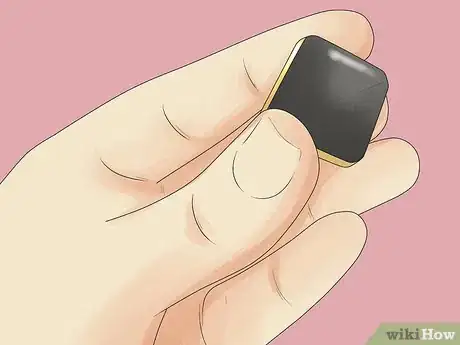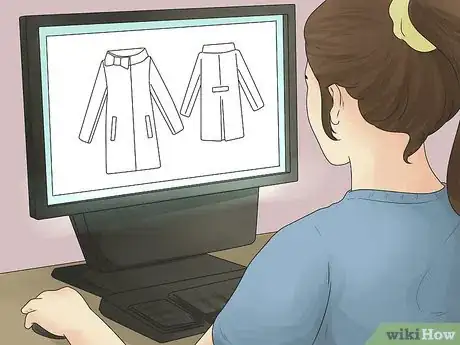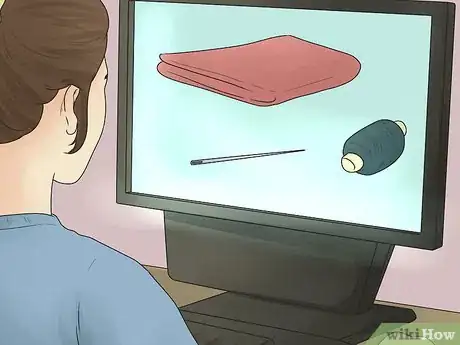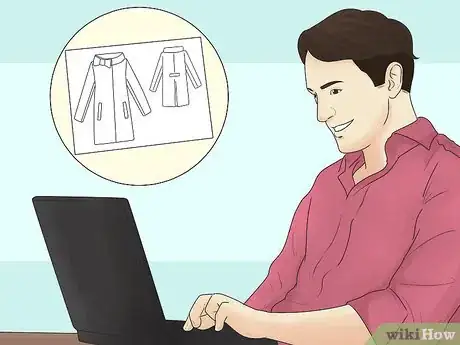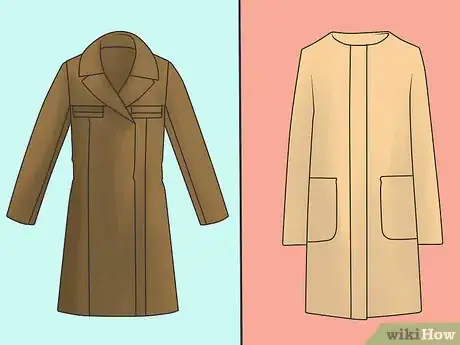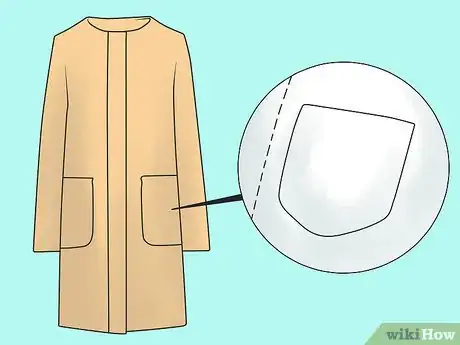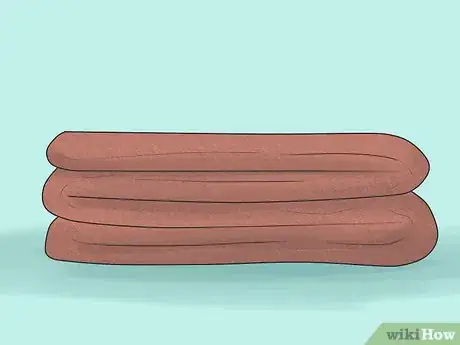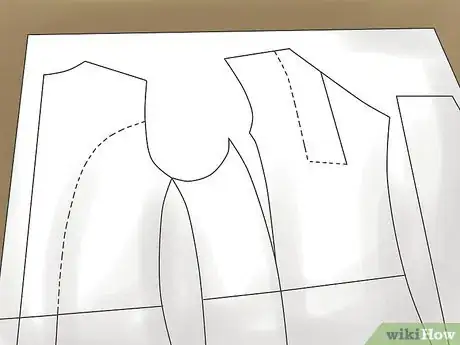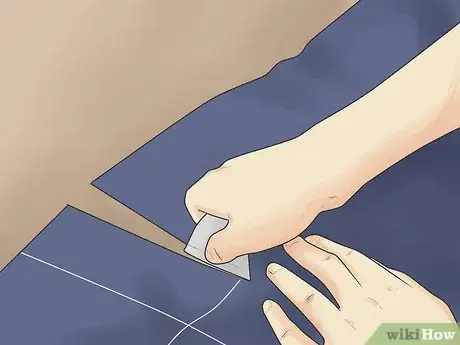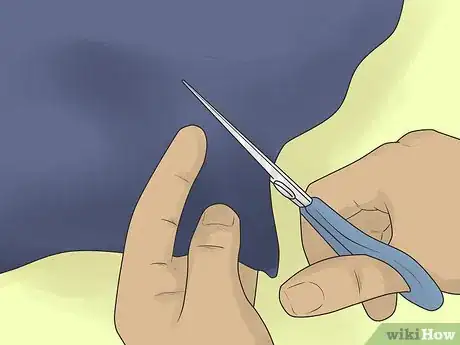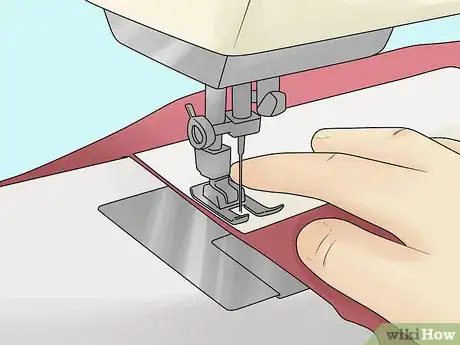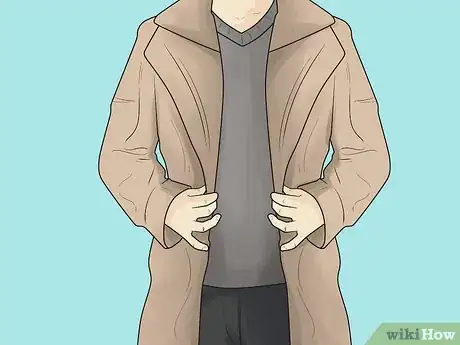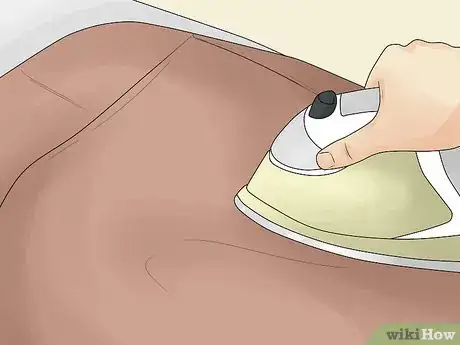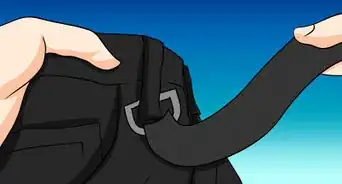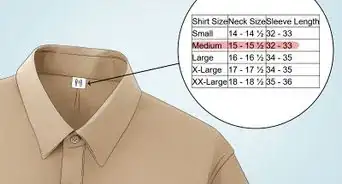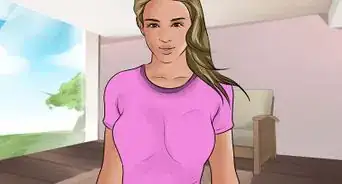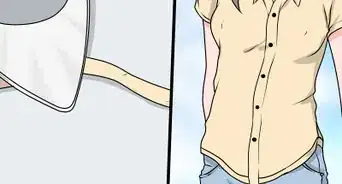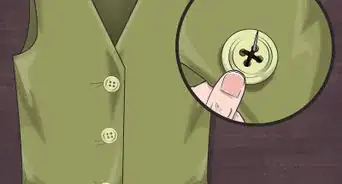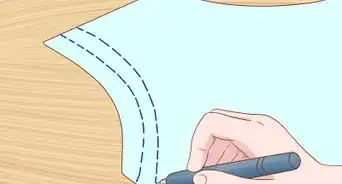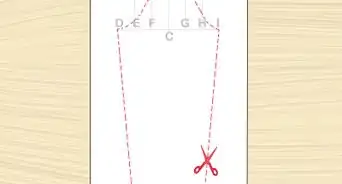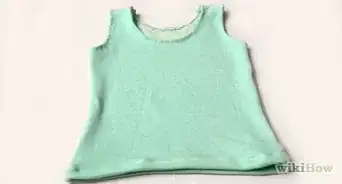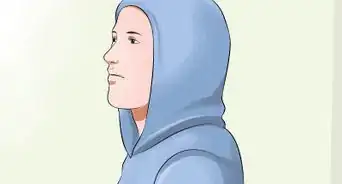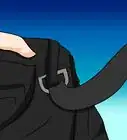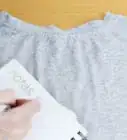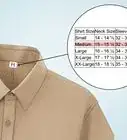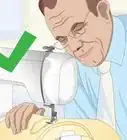wikiHow is a “wiki,” similar to Wikipedia, which means that many of our articles are co-written by multiple authors. To create this article, 18 people, some anonymous, worked to edit and improve it over time.
This article has been viewed 206,483 times.
Learn more...
Sewing a coat requires basic machine sewing skills. Although it may appear to be difficult, most coats have few pattern pieces and are easy to fit because they do not hug close to the body. When selecting a pattern to sew, look for simple sleeves and a plain front. Stay clear of coats with darts or fancy seam lines. Think of it as a big "T" shaped garment that may or may not have a collar. Simple coats from polar fleece or heavy wool may not need lining. Linings are not difficult to insert, and will add to the comfort of the garment. In this wikiHow we'll examine the first few steps to take in this project.
Steps
-
1Invest in suitable fabric: Be prepared to spend a minimum of $10 per yard for a wool fabric. If you want to use a fleece, you may find that at a lower cost. Cotton denim and corduroy are also suitable for most coats.
-
2Choose a good lining: Costs for this type of fabric can vary. Consider selecting silky blouse or skirt fabric instead of the usual plain lining sold by most stores. A printed lining is a fun addition to a solid colored coat. Stay away from stretchy fabrics, knits, and crayons.Advertisement
-
3Get some good interfacing: Often the pattern instructions will require fusible interfacing. This is an iron-on type of fabric 'stiffener'. Interfacing is a light-weight product that is ironed to the back side of most collars, lapels and some coat fronts to help them keep their shape.
-
4Choose some nice buttons: Have fun finding vintage buttons at thrift shops and yard sales to create a unique look.
-
5Research your pattern: Shopping for your coat pattern online will help you find a style you like. Do have someone measure you first so that you buy the correct pattern size.
-
6Be sure to assemble the correct notions: All of your supplies may be available online as well. Check the back of the pattern envelope for all required notions. Thread selection should match your coat. The sewing needle should be larger than average if your fabric is thick. A size 14 needle will be good for heavier fabric. If you want to add double stitching (like you see on denim), consider topstitching with a double needle. This shopping project can be done at home in your free time.
-
7Buy a pattern. You may decide to find your pattern online. If not, go to a craft supply, sewing, art, quilting shop, fabric store or hobby store and look for the pattern catalogs and pattern packets. Most will show a picture of the finished product so you can consider how closely it matches your inspiration. Look at the back of the pattern envelope for details in the seam lines. The back will also list sizes and fabric needs.Pattern prices can range from a dollar (at a yard sale) to about $20 for a new pattern.
-
8Select a pattern with a skill level that closely matches your current skills. If you are new to this project, look for a minimum of seam lines. Go for the more 'tunic' look to start. A collar with lapel is a more advanced project, but a simple standing collar can be a good way to start.
-
9Consider how easy or difficult it will be to modify the pattern to your own inspiration or requirements. For an easy way to change a pattern, try different colors for collar and lapel, or design the patch pocket shape.
-
10Select your material. For a winter coat you will need the correct weight and texture, as well as other qualities like water fastness and more.
-
11Open the pattern envelope and lay out the complete pattern on a large table. Read through the entire pattern. Look for any confusing, challenging, or foreign parts. Compare those steps with your sewing book. Maybe the book will have a better idea for sewing a difficult area. Be sure to research those parts before you begin!
-
12Cut. Lay out your paper pattern on the wool. Be sure to keep the grain line (arrows) going up/down with the wool. You can use heavy books to hold the patterns in place while you make adjustments in placement. Pin down the pieces when you have everything in place. Cut evenly, with smooth slices. Your scissors should be 8" long. Don't use dull or short shears. Some people like to label each piece after they cut with a note on the back side of the wool. This way you won't get mixed-up or loose pieces when you sew.Lay the fabric flat on a big table or a clean, smooth floor. Your pattern may require a center fold. Make this parallel to the selvage edges.
-
13Cut out only those pattern pieces you will be using. Pin the paper pattern together, keeping a 5/8" seam allowance. Carefully try this paper pattern on over a shirt or top. You will have a half-garment in paper. Have a friend check the fit: shoulders? back? bust/chest? length? arms? Make any tucks with pins. Clip any tight spots and widen that area with a paper patch to make it bigger. When the fit looks good, you are ready to cut your fabric.
-
14Follow the pattern instructions for sewing. Clip threads after each seam, backstitching each line of sewing. Press each seam open. Iron on the fusible interfacing with paper on the ironing board and over the fabric to protect the iron from the sticky residue. Take your time. Keep your pieces in order by storing them in zip lock bags. Stop when you are tired.
-
15Fit your coat. When the coat body is complete, try on the coat for fit. Have your friend check this. length? shoulders? chest/bust? collar? If you need to take the body in more, do this before you add the sleeves. Take in the sleeve side seam the same amount as the body side seam so they are still the same. If your coat needs shoulder pads for a classic look, put those in when you fit.
-
16Iron. Final pressing: Use a damp linen towel or cloth between the wool and your iron to press the coat. You may find that taking it to a dry cleaners for a pressing will be even better.Well, it's done!!!
Community Q&A
-
QuestionWhat fabric is water and wind repellent?
 Anon AmouseCommunity AnswerLight weight specialty fabrics like Taslon and other engineered nylons. Search online under camping and hiking gear for brand names. Not all nylon fabrics are water repellent or water proof, so check details. Most of these are easily sewn at home with standard home sewing machines, although a specialty needle may be required since these fabrics can snag easily and dull standard needles very quickly. A titanium needle is a good bet if no special needle is needed.
Anon AmouseCommunity AnswerLight weight specialty fabrics like Taslon and other engineered nylons. Search online under camping and hiking gear for brand names. Not all nylon fabrics are water repellent or water proof, so check details. Most of these are easily sewn at home with standard home sewing machines, although a specialty needle may be required since these fabrics can snag easily and dull standard needles very quickly. A titanium needle is a good bet if no special needle is needed. -
QuestionHow do I measure for a winter coat?
 Community AnswerMeasure around the fullest part of your chest. Keep the measure tape firmly around the armpits and shoulder blades. Measure slightly under your natural waist, where you normally wear your trousers.
Community AnswerMeasure around the fullest part of your chest. Keep the measure tape firmly around the armpits and shoulder blades. Measure slightly under your natural waist, where you normally wear your trousers.
